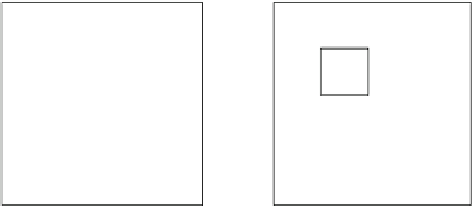Graphics Reference
In-Depth Information
Fig. 7.2
Block artifact may
be created when adjacent
blocks are predicted from
non-adjacent areas in the
reference picture
Block
artifact
Reference picture
Current picture
Fig. 7.3
Example of block
artifact in one dimension [
37
]
q3
q2
q1
q0
p0
p1
p2
p3
PU/TU boundary
used in HEVC, coarse quantization can also create discontinuities at the block
boundaries. In highly detailed areas with high-frequency content, such artifacts can
be masked by the human visual system. However, in the smooth areas, discontinu-
ities between the blocks are easily noticed by a viewer and may cause significant
degradation of the perceived video quality. The example of a block artifact in one
dimension is shown in Fig.
7.3
. The horizontal axis shows the sample positions
along a horizontal or vertical 1-D line, and the vertical axis shows the sample values.
Deblocking filter attenuates the artifacts in the areas, where they are mostly
visible, i.e. in the smooth, uniform areas. The excessive filtering in the highly
detailed areas should be avoided since it can cause undesirable blurring. The
artifacts in those areas are rarely noticed by the human eye, while it is also more
difficult to determine whether the discontinuity is caused by a block boundary or
belongs to the original signal [
27
]. Therefore, an important part of the deblocking
filter is the deblocking filtering decisions, which determine whether a particular
part of a block boundary is to be filtered. In these decisions, the HEVC deblocking
filter uses the mode and motion information from the decoded bitstream as well as
analyses the values of reconstructed samples on the sides of the block boundary. The
strength of the deblocking filter can also be adjusted by the encoder on the picture
and the slice basis.
Section
7.2.2
provides a description of the HEVC deblocking filer, while
Sect.
7.5.1
discusses the coding efficiency and subjective quality improvements





















